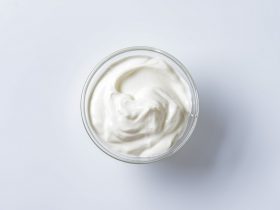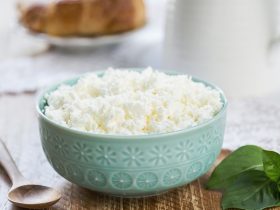Oysters are well known for being eaten raw and for the risk of food poisoning they carry. As pregnant women nowadays become more and more cautious with the food they eat, many wonder if there is a way for them to eat oysters safely without causing their baby harm.
Oysters can be safely eaten during pregnancy as long as they have been properly cooked. They should never be eaten raw by pregnant women because of the risk of developing food borne illnesses. Being low in mercury content, oysters is one of the “best” choices for seafood consumption during pregnancy.
Jesmarie Macapagal, RN, MD, DPPS
What is an Oyster?
Oysters are bivalve mollusks that are found in oceans throughout the world. They usually live in colonies (also called beds or reefs) in shallow waters, and are often found on hard surfaces likes shells and rocks.
In the United States, there are five species of oysters that are commonly being sold as food. The most popularly harvested are the Pacific oyster and Eastern American (also called Atlantic) oyster. Other species include the Kumamoto oyster, Olympia oyster, and European flats.
The shells of oysters are either oval or pear shaped. Their outer shell is usually whitish-gray in color while inside is generally porcelain white. Oysters have strong adductor muscles that close their shells for protection whenever there is a threat.

Oysters eat algae and other food particles that they extract from the water they draw over their gills constantly. Every hour, oysters are able to filter up to 1.3 gallons of water.
Oysters are most commonly served freshly shucked and raw. But they are a highly flexible type of food and can be cooked either by steaming, pan-searing, poaching, smoking, frying, boiling or baking.
Benefits of Shellfish Consumption During Pregnancy
According to the U.S. Department of Agriculture (USDA, 2019), the nutrient composition of cooked Pacific oysters per 100 grams are as follows:
| Nutrient | Amount |
|---|---|
| Calories | 163 |
| Total fat | 4.6 g |
| Saturated fat | 1 g |
| Polyunsaturated fat | 1.8 g |
| EPA | 0.88 g |
| DHA | 0.5 g |
| Cholesterol | 100 mg |
| Carbohydrate | 10 g |
| Protein | 19 g |
| Sodium | 212 mg |
| Potassium | 302 mg |
| Zinc | 33.2 mg |
| Selenium | 154 mcg |
| Vitamin C | 12.8 mg |
| Calcium | 16 mg |
| Iron | 9.2 mg |
| Magnesium | 44 mg |
| Thiamin | 0.13 mg |
| Riboflavin | 0.44 mg |
| Niacin | 3.62 mg |
| Vitamin B6 | 0.09 mg |
| Folate | 15 mcg |
| Vitamin B12 | 28.8 mcg |
| Vitamin A | 487 IU |
| Vitamin E | 0.85 mg |
The U.S. Food and Drug Administration (FDA), Environmental Protection Agency (EPA), as well as the 2015-2020 Dietary Guidelines for Americans (DGA), all recommend that pregnant women consume from 8 to 12 ounces (equivalent to 2-3 servings) of a variety of seafood every week, and choose those that have lower mercury content.
Improved Neurodevelopment
The European Food Safety Authority (EFSA), World Health Organization (WHO), and Food and Agriculture Organization (FAO) of the United Nations all underline the benefit of improved neurodevelopment with prenatal exposure to seafood during pregnancy (Bramante et al., 2018).
In 2007, Hibbeln et al. reported that a maternal seafood intake of less than 340 grams per week during pregnancy was found to significantly increase the risk of their children being in the lowest 25th percentile for verbal intelligence quotient (IQ), compared to a greater amount of seafood intake of more than 340 grams per week. Additionally, a low level of seafood intake was associated with increased risk of lower development scores for prosocial behavior, fine motor, communication and social skills.
Similarly, Julvez et al. in 2016 demonstrated that maternal seafood consumption more than the recommended amount of 340 grams per week was associated with better neuropsychological scores in their children. 2.84 to 3.6 points higher on the McCarthy General Cognitive Scale were seen, as well as 0.61 points lower on the Childhood Asperger Syndrome Test. Overall, consumption of seafood during pregnancy benefits their offspring in terms of improvement in cognitive functioning and offers some protection against autism-spectrum traits.
Increased Birth Weight
Infant birth weight has also been positively linked to seafood consumption during pregnancy. In 2012, Brantsæter et al. showed that maternal fish and shellfish intake of more than 60 grams per day during pregnancy led to a significantly lower relative risk of delivering a small baby less than 2500 grams, compared to a seafood intake of less than 5 grams per day.
Likewise, Amezcua-Prieto et al. in 2018 revealed that pregnant women with seafood consumption of more than 29 grams per day were found to have lower risk of giving birth to a small for gestational age (SGA) infant, compared with those with seafood consumption less than 8 grams per day. Similarly, shellfish intake of greater than once per week provided significant protection from having an SGA newborn.
Risks of Eating Shellfish While Pregnant
Vibrio
The association between consumption of oysters, and other shellfish, contaminated with Vibrio and the development of human illnesses has been well documented. Strains of several species, including Vibrio vulnificus, Vibrio parahaemolyticus and Vibrio cholerae have been implicated as causative agents of gastrointestinal infections (Lyon, 2001).
- Vibrio vulnificus
V. vulnificus is an opportunistic human bacterium that is commonly found in estuarine environments. Infections are primarily associated with ingestion of raw oysters and can produce rapidly fatal septicemia (Campbell & Wright, 2003).
In the United States, most of the oysters sold for consumption are harvested from the Gulf of Mexico. Over the years, an increasing number of illnesses related to V. vulnificus has been documented (Panicker & Bej, 2005).
High numbers of V. vulnificus can be isolated from shellfish that are harvested in the gulf during warm summer months. Primary septicemia occurs with a prevalence of approximately 30 cases per year among shellfish consumers, and often leads to death (Drake et al., 2006) with an associated mortality rate of 60 percent (Panicker & Bej, 2005).
- Vibrio parahaemolyticus
V. parahaemolyticus is a leading cause of gastroenteritis that is associated with consumption of raw or undercooked fish and shellfish (Mala et al., 2016). Oysters, in particular, have been repeatedly implicated in infections with this bacterium (Chen & Ge, 2010).
In 2015, Flores-Primo et al. indicated that different strains of V. parahaemolyticus vary in their ability to survive at low refrigeration temperatures. This study also showed that changes in the genetic expression of pathogenic genes of V. parahaemolyticus occur at 7 degrees Celsius in American oysters under cold storage.
Within 24 hours of eating contaminated shellfish, V. parahaemolyticus infection can lead to gastroenteritis with diarrhea, abdominal cramps, nausea, vomiting, fever and chills, which typically lasts for 1 to 3 days (CDC, 2006).
Enteric Viruses
Shellfish are common vehicles for enteric viral transmission. Raw or undercooked shellfish, including oysters, clams, mussels and cockles, are among the most prominent sources of infection (Richards, 2016). Shellfish are particularly susceptible to viral contamination because they can readily bioaccumulate waterborne microbial pathogens from marine and estuarial waters (Leon et al., 2011).
- Norovirus
Transmission of noroviruses via contaminated shellfish consumption is a global concern (Leon et al., 2011). Oysters are considered the primary vector of human noroviruses because they are often eaten raw or only partially heated (Yu et al., 2015). In addition, noroviruses can persist in sea water for extended amounts of time and remain viable in shellfish tissues for several weeks (Leon et al., 2011).
Norovirus is now considered the most frequent cause of food borne outbreaks in the United States (Leon et al., 2011) and throughout the world. Norovirus infection can lead to diarrhea, vomiting, nausea, abdominal cramps, fever, chills, headache, body malaise, and dehydration (Richards, 2016).
- Hepatitis A virus
Very large outbreaks of hepatitis A virus infections have been linked to consumption of contaminated shellfish. Symptoms of hepatitis A infection include nausea, vomiting, anorexia, malaise, fever, jaundice and abdominal pain in the right upper quadrant. Liver damage may ensue, while viral shedding from infected individuals can persist for up to 5 months (Richards, 2016).
Mercury
Mercury can be found naturally in the environment and can also be a product of industrial pollution. Mercury falls from the air and accumulates in streams and oceans. It is turned into methylmercury in the water, and this type of mercury may potentially be harmful to an unborn fetus (US FDA, 2004).
Fish and shellfish absorb the mercury as they feed in the water. As a result, mercury builds up in their bodies. Depending on what they eat, some fish and shellfish accumulate higher levels of mercury than others (US FDA, 2004).
Mercury is able to pass through the placenta and cause toxicity to the fetus. High levels of fetal exposure to mercury can result in a wide range of developmental disorders, which include “mental retardation, cerebellar ataxia, dysarthria, limb deformities, altered physical growth, sensory impairments, and cerebral palsy” (Seo et al., 2020).
Almost all fish and shellfish contain at least traces of mercury (US FDA, 2004). Oysters are known to contain low levels. According to the US FDA (2017) data, oysters contain an average mercury concentration of only 0.012 ppm (parts per million).
Hence, oysters are categorized under the “Best Choices” list for seafood consumption with low mercury content according to the US FDA and EPA, from which pregnant women can choose to eat 2 to 3 servings per week. Other types of seafood under this list include clam, crab, lobster, scallop and shrimp.
On the other hand, seafood choices to avoid with the highest mercury levels include king mackerel, marlin, orange roughy, shark, swordfish, tilefish and bigeye tuna. Fish that are larger and have lived longer have the highest amounts of mercury because they had a longer time to accumulate it (US FDA, 2004).
How to Eat Oysters Safely During Pregnancy
Buy only fresh oysters. Shells should be fully closed and smell like salt water. Cook oysters immediately after buying. Do not cook oysters that have shells which are already open.
Pregnant women should only eat oysters that have been properly cooked. According to the Washington State Department of Health, shellfish should be cooked to an internal temperature of 145 degrees Fahrenheit (63oC) for at least 15 seconds to ensure its safety. Shucked oysters will turn plump and opaque, with the edges curled, when thoroughly cooked.
The US FDA recommends boiling shucked oysters for 3 minutes, prior to frying or baking. After boiling, shucked oysters can be fried in oil at 375 degrees Fahrenheit (191oC) or baked in the oven at 450 degrees Fahrenheit (232oC), either for 10 minutes.
Meanwhile, oysters in the shell open when cooked. Any shell that does not open after cooking must not be consumed and discarded instead. The US FDA recommends steaming oysters in the shell for at least 4 to 9 minutes, or boiling them until they open then add another 3 to 5 minutes.
Pregnant women should not eat raw or smoked oysters. Raw shellfish, including oysters, scallops and clams, “can have harmful bacteria, viruses or toxins in them” and can lead to food poisoning, according to the NHS.
When cooking at home, avoid cross contamination and make sure that cooked food does not come in contact with raw seafood. Wash hands thoroughly before and after touching raw seafood.
When dining out or ordering from a restaurant, ask if their oysters have been cooked before consuming. Confirm by checking if the oysters have a firm texture.
Final Thoughts
Oysters, when cooked thoroughly, can be safely consumed by pregnant women. They contain nutrients that are beneficial for fetal growth and development. They are also among the seafood species that have lower mercury concentrations.
However, when eaten raw, oysters can lead to food poisoning and cause serious harm. Therefore, cooking at the recommended temperature of 145 degrees Fahrenheit is very important. Another indication of proper cooking of oysters would be when shells are opened.
With the vast range of different types and species of seafood available for consumption, a consultation with your obstetrician or dietitian will be best to ensure safety during pregnancy.
References
- https://www.nationalgeographic.com/
- https://www.healthline.com/
- https://www.fda.gov/
- https://www.mayoclinic.org/
- https://www.nhs.uk/
- https://www.doh.wa.gov/
- Amezcua-Prieto, C., Martinez-Galiano, J. M., Salcedo-Bellido, I., Olmedo-Requena, R., Bueno-Cavanillas, A., & Delgado-Rodriguez, M. (2018). Maternal seafood intake and the risk of small for gestational age newborns: A case-control study in Spanish women. BMJ Open 8(8), e020424. doi: 10.1136/bmjopen-2017-020424
- Bramante, C., Spiller, P., & Landa, M. (2018). Fish consumption during pregnancy. JAMA Pediatrics 172(9), 801-802. doi: 10.1001/jamapediatrics.2018.1619
- Brantsæter, A. L., Birgisdottir, B. E., Meltzer, H. M., Kvalem, H. E., Alexander, J., Magnus, P., & Haugen, M. (2012). Maternal seafood consumption and infant birth weight, length and head circumference in the Norwegian Mother and Child Cohort Study. The British Journal of Nutrition 107(3), 436-444. doi: 10.1017/S0007114511003047
- Campbell, M., & Wright, A. (2003). Real-time PCR analysis of Vibrio vulnificus from oysters. Applied and Environmental Microbiology 69(12), 7137-7144. doi: 10.1128/AEM.69.12.7137-7144.2003
- Centers for Disease Control and Prevention (CDC). (2006). Vibrio parahaemolyticus infections associated with consumption of raw shellfish: Three states, 2006. MMWR: Morbidity and Mortality Weekly Report 55(31), 854-856. PMID: 16902397
- Chen, S., & Ge, B. (2010). Development of a toxR-based loop-mediated isothermal amplification assay for detecting Vibrio parahaemolyticus. BMC Microbiology 10, 41. doi: 10.1186/1471-2180-10-41
- Drake, S. L., Elhanafi, D., Bang, W., Drake, M. A., Green, D. P., & Jaykus, L. A. (2006). Validation of a green fluorescent protein-labeled strain of Vibrio vulnificus for use in the evaluation of postharvest strategies for handling of raw oysters. Applied and Environmental Microbiology 72(11), 7205-7211. doi: 10.1128/AEM.01091-06
- Flores-Primo, A., Pardio-Sedas, V., López-Hernández, K., Lizárraga-Partida, L., & Uscanga-Serrano, R. (2015). [Growth and survival of total and pathogenic Vibrio parahaemolyticus in American oyster (Crassostrea virginica) under cold storage]. Salud Publica de Mexico 57(3), 211-218. PMID: 26302123
- Hibbeln, J., Davis, J., Steer, C., Emmett, P., Rogers, I., Williams, C., & Golding, J. (2007). Maternal seafood consumption in pregnancy and neurodevelopmental outcomes in childhood (ALSPAC study): An observational cohort study. Lancet 369(9561), 578-585. doi: 10.1016/S0140-6736(07)60277-3
- Julvez, J., Méndez, M., Fernandez-Barres, S., Romaguera, D., Vioque, J., Llop, S., …, & Sunyer, J. (2016). Maternal consumption of seafood in pregnancy and child neuropsychological development: A longitudinal study based on a population with high consumption levels. American Journal of Epidemiology 183(3), 169-182. doi: 10.1093/aje/kwv195
- Leon, J., Kingsley, D., Montes, J., Richards, G., Lyon, G. M., Abdulhafid, G., …, & Moe, C. (2011). Randomized, double-blinded clinical trial for human norovirus inactivation in oysters by high hydrostatic pressure processing. Applied and Environmental Microbiology 77(15), 5476-5482. doi: 10.1128/AEM.02801-10
- Lyon, W. J. (2001). TaqMan PCR for detection of Vibrio cholerae O1, O139, Non-O1, and Non-O139 in pure cultures, raw oysters, and synthetic seawater. Applied and Environmental Microbiology 67(10), 4685-4693. doi: 10.1128/AEM.67.10.4685-4693.2001
- Mala, W., Alam, M., Angkititrakul, S., Wongwajana, S., Lulitanond, V., Huttayananont, S., …, & Chomvarin, C. (2016). Serogroup, virulence, and molecular traits of Vibrio parahaemolyticus isolated from clinical and cockle sources in northeastern Thailand. Infection, Genetics and Evolution 39, 212-218. doi: 10.1016/j.meegid.2016.01.006
- Panicker, G., & Bej, A. (2005). Real-time PCR detection of Vibrio vulnificus in oysters: Comparison of oligonucleotide primers and probes targeting vvhA. Applied and Environmental Microbiology 71(10), 5702-5709. doi: 10.1128/AEM.71.10.5702-5709.2005
- Richards, G. (2016). Shellfish-associated enteric virus illness: Virus localization, disease outbreaks and prevention. Viruses in Foods 185-207. doi: 10.1007/978-3-319-30723-7_7
- Seo, J., Kim, B., & Hong, Y. (2020). The relationship between mercury exposure indices and dietary intake of fish and shellfish in women of childbearing age. International Journal of Environmental Research and Public Health 17(13), 4907. doi: 10.3390/ijerph17134907
- U.S. Department of Agriculture (USDA). (2019). FoodData central search results: Mollusks, oyster, Pacific, cooked, moist heat. https://fdc.nal.usda.gov/fdc-app.html#/food-details/174250/nutrients
- U.S. Food and Drug Administration (US FDA). (2004). FDA/EPA 2004 advice on what you need to know about mercury in fish and shellfish. https://www.fda.gov/food/metals-and-your-food/fdaepa-2004-advice-what-you-need-know-about-mercury-fish-and-shellfish
- U.S. Food and Drug Administration (US FDA). (2017). Mercury levels in commercial fish and shellfish (1990-2012). https://www.fda.gov/food/metals-and-your-food/mercury-levels-commercial-fish-and-shellfish-1990-2012
- Yu, Y., Cai, H., Hu, L., Lei, R., Pan, Y., Yan, S., & Wang, Y. (2015). Molecular epidemiology of oyster-related human noroviruses and their global genetic diversity and temporal-geographical distribution from 1983 to 2014. Applied and Environmental Microbiology 81(21), 7615-7624. doi: 10.1128/AEM.01729-15




